<< Previous | Displaying results 5176-5200 of 6769 for "" | Next >>
An American anti-aircraft gun, towed by a truck camouflaged with foliage, moves into position in the Hürtgen Forest to provide fire support against ground targets. November 6, 1944. US Army Signal Corps photograph taken by C A Corrado.
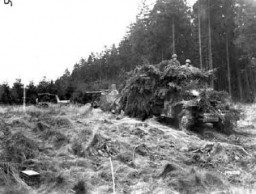
Mortar men of the 754th Tank Battalion fire an 81mm mortar at German positions during the heavy fighting in the Hürtgen Forest. December 15, 1944. US Army Signal Corps photograph taken by C. Tesser.

A soldier prepares to bed down for the night in a Belgian forest during the Battle of the Bulge. December 21, 1944. US Army Signal Corps photograph taken by J Malan Heslop.
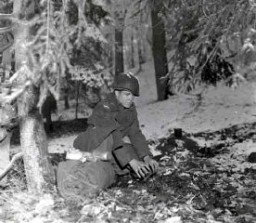
During the Battle of the Bulge, US troops move up to the front in open trucks in subzero weather to stop the German advance. December 22, 1944. US Army Signal Corps photograph taken by J Malan Heslop.
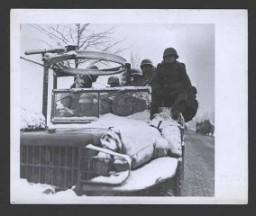
An American GI using his steel helmet to draw water from a stream during the Battle of the Bulge. December 22, 1944. US Army Signal Corps photograph taken by J Malan Heslop.
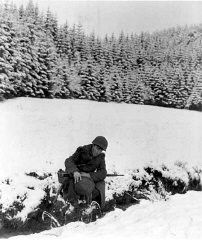
John Perry, a movie photographer with Unit 129, films GIs of the 290th Infantry Regiment, 75th Infantry Division, and 4th Cavalry Group ferreting out German snipers near Beffe, Belgium during the Battle of the Bulge. Twelve Germans were killed. The scene was photographed by Carmen Corrado of the 129th. January 7, 1945. US Army Signal Corps photograph taken by C.A. Corrado.
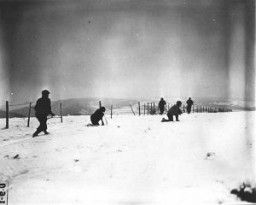
Infantryman of the US 89th Division cross the Rhine River in assault boats near St. Goar, Germany. March 26, 1945. US Army Signal Corps photograph taken by A. Graham.
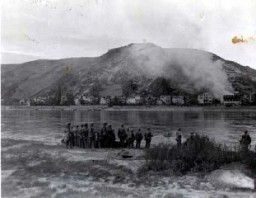
GIs keep low inside a landing craft during an assault across the Rhine at Oberwesel, Germany. March 22, 1945. US Army Signal Corps photograph.
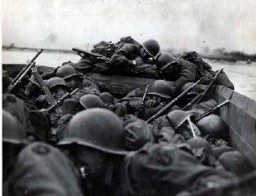
US Army Signal Corps photographers from Combat Unit 123 photograph ruins in the city of Naumburg, Germany. Photograph taken by J Malan Heslop. April 10, 1945.
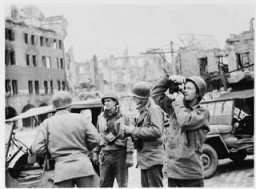
US Army Signal Corps photographer J Malan Heslop types photo captions. France, 1944.
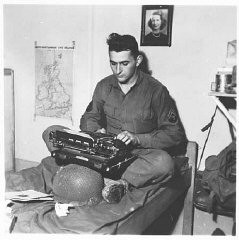
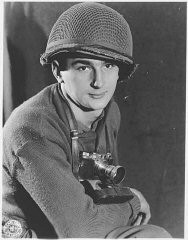
Portrait of US combat photographer Arnold E. Samuelson. France, 1944-1945. Samuelson took some of the best known photographs of Holocaust survivors upon the liberation of the camps.
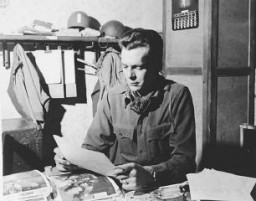
John Perry, a movie photographer with Unit 129, films GIs of the 290th Infantry Regiment, 75th Infantry Division, and 4th Cavalry Group ferreting out German snipers near Beffe, Belgium, in early January 1945. Twelve Germans were killed. The scene was photographed by Carmen Corrado of the 129th. January 7, 1945. US Army Signal Corps photograph taken by C.A. Corrado.
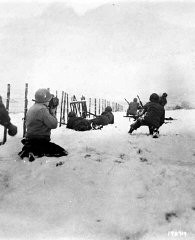
Sergeant Alexander Drabik, the first American soldier to cross the bridge at Remagen, receiving the Distinguished Service Cross for his heroism. April 5, 1945. US Army Signal Corps photograph taken by J Malan Heslop.
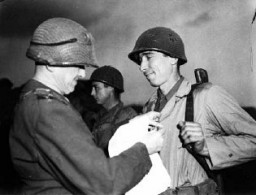
German prisoners file across the Rhine as American supply trucks move forward toward the front. March 26, 1945. US Army Signal Corps photograph.
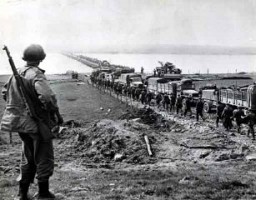
Surrendered Germans in Austria. May 1945. US Army Signal Corps photograph taken by J Malan Heslop.
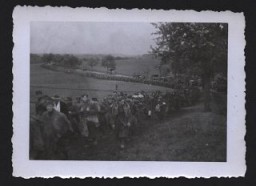
American soldiers walk along an open mass grave for the of victims of the Nordhausen concentration camp. US army officers ordered the residents of Nordhauen to prepare the grave for the burial of the victims. Nordhausen, Germany, April 13–14, 1945.
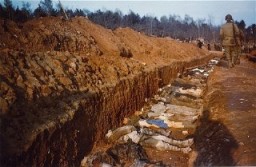
Soon after liberation, British medical officers begin disinfection of camp survivors. Bergen-Belsen, Germany, May 1945.
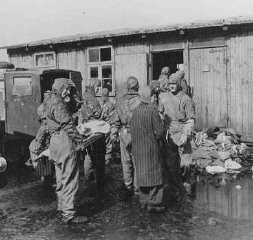
Soon after liberation, camp survivors wait for rations of potato soup. Bergen-Belsen, Germany, April 28, 1945.
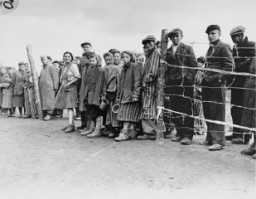
Soon after liberation, camp survivors walk amidst dead bodies. Bergen-Belsen, Germany, after April 15, 1945.
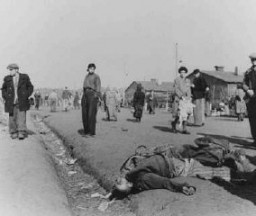
Soon after liberation, women camp survivors prepare food near piles of dead bodies. Bergen-Belsen, Germany, after April 15, 1945.
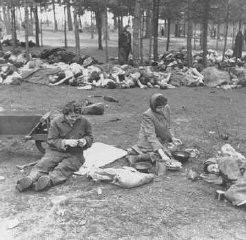
Naftali Saleschutz (Norman Salsitz) prepares cement for the foundation of a sukkah (a hut-like structure used to celebrate the Jewish holiday of Sukkot). Kolbuszowa, Poland, 1937.
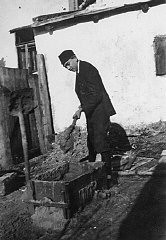
Members of the Saleschutz family do laundry in the yard of their home. Kolbuszowa, Poland, 1934.

A survivor stokes smoldering human remains in a crematorium oven that was still lit in the Dachau camp. Photograph taken upon the liberation of the camp. Dachau, Germany, April 29-May 1, 1945.
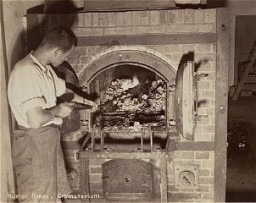
View of a section of the newly liberated Dachau concentration camp as seen through the barbed-wire fence. Dachau, Germany, May 1945.
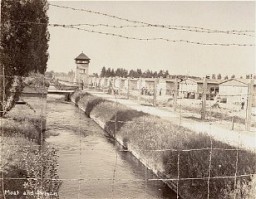
We would like to thank Crown Family Philanthropies, Abe and Ida Cooper Foundation, the Claims Conference, EVZ, and BMF for supporting the ongoing work to create content and resources for the Holocaust Encyclopedia. View the list of donor acknowledgement.